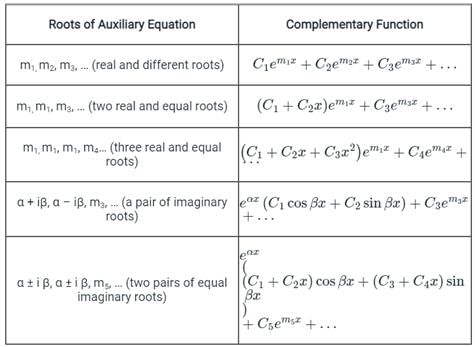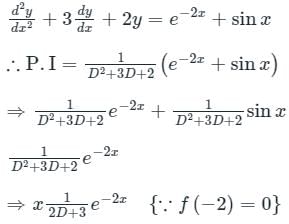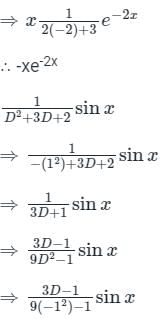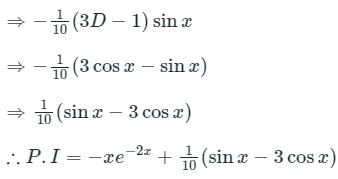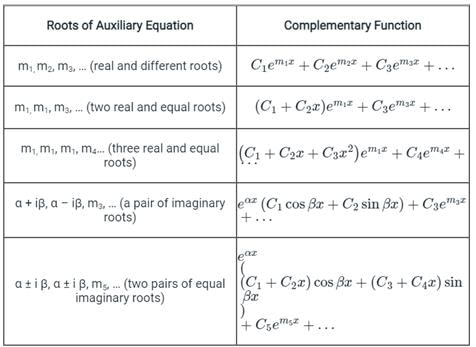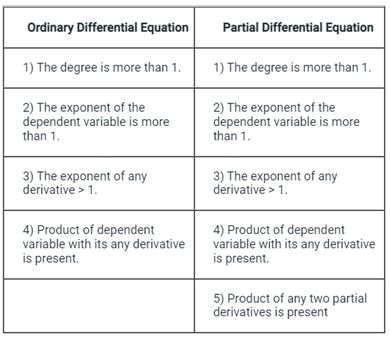Computer Science Engineering (CSE) Exam > Computer Science Engineering (CSE) Tests > Test: Higher Order Linear Differential Equations with Constant Coefficients - 2 - Computer Science Engineering (CSE) MCQ
Test: Higher Order Linear Differential Equations with Constant Coefficients - 2 - Computer Science Engineering (CSE) MCQ
Test Description
10 Questions MCQ Test - Test: Higher Order Linear Differential Equations with Constant Coefficients - 2
Test: Higher Order Linear Differential Equations with Constant Coefficients - 2 for Computer Science Engineering (CSE) 2025 is part of Computer Science Engineering (CSE) preparation. The Test: Higher Order Linear Differential Equations with Constant Coefficients - 2 questions and answers have been prepared
according to the Computer Science Engineering (CSE) exam syllabus.The Test: Higher Order Linear Differential Equations with Constant Coefficients - 2 MCQs are made for Computer Science Engineering (CSE) 2025 Exam.
Find important definitions, questions, notes, meanings, examples, exercises, MCQs and online tests for Test: Higher Order Linear Differential Equations with Constant Coefficients - 2 below.
Solutions of Test: Higher Order Linear Differential Equations with Constant Coefficients - 2 questions in English are available as part of our course for Computer Science Engineering (CSE) & Test: Higher Order Linear Differential Equations with Constant Coefficients - 2 solutions in
Hindi for Computer Science Engineering (CSE) course.
Download more important topics, notes, lectures and mock test series for Computer Science Engineering (CSE) Exam by signing up for free. Attempt Test: Higher Order Linear Differential Equations with Constant Coefficients - 2 | 10 questions in 30 minutes | Mock test for Computer Science Engineering (CSE) preparation | Free important questions MCQ to study for Computer Science Engineering (CSE) Exam | Download free PDF with solutions
Test: Higher Order Linear Differential Equations with Constant Coefficients - 2 - Question 1
The particular integral of (D + 3)2 y = 5x - log 2, is
Detailed Solution for Test: Higher Order Linear Differential Equations with Constant Coefficients - 2 - Question 1
Test: Higher Order Linear Differential Equations with Constant Coefficients - 2 - Question 2
A particle undergoes forced vibrations according to the law xn(t) + 25x(t) = 21 sin t. If the particle starts from rest at t = 0, find the displacement at any time t > 0.
Detailed Solution for Test: Higher Order Linear Differential Equations with Constant Coefficients - 2 - Question 2
Test: Higher Order Linear Differential Equations with Constant Coefficients - 2 - Question 3
An integrating factor for the differential equation 

Detailed Solution for Test: Higher Order Linear Differential Equations with Constant Coefficients - 2 - Question 3
Test: Higher Order Linear Differential Equations with Constant Coefficients - 2 - Question 4
The solution to x2y’’ + xy’ – y = 0 is
Detailed Solution for Test: Higher Order Linear Differential Equations with Constant Coefficients - 2 - Question 4
Test: Higher Order Linear Differential Equations with Constant Coefficients - 2 - Question 5
The solution of differential equation un+3 - 4un+2 + un+1 + 6un = 0 will be:
Detailed Solution for Test: Higher Order Linear Differential Equations with Constant Coefficients - 2 - Question 5
Test: Higher Order Linear Differential Equations with Constant Coefficients - 2 - Question 6
The solution ex, e-x, and e2x of  will be:
will be:
Detailed Solution for Test: Higher Order Linear Differential Equations with Constant Coefficients - 2 - Question 6
Test: Higher Order Linear Differential Equations with Constant Coefficients - 2 - Question 7
A differential equation is given as:

The solution of the differential equation in terms of arbitrary constants C1 and C2 is
Detailed Solution for Test: Higher Order Linear Differential Equations with Constant Coefficients - 2 - Question 7
Test: Higher Order Linear Differential Equations with Constant Coefficients - 2 - Question 8
Particular integral of 
Detailed Solution for Test: Higher Order Linear Differential Equations with Constant Coefficients - 2 - Question 8
Test: Higher Order Linear Differential Equations with Constant Coefficients - 2 - Question 9
The general solution of the differential equation 
Detailed Solution for Test: Higher Order Linear Differential Equations with Constant Coefficients - 2 - Question 9
Test: Higher Order Linear Differential Equations with Constant Coefficients - 2 - Question 10
The ordinary differential equation
Detailed Solution for Test: Higher Order Linear Differential Equations with Constant Coefficients - 2 - Question 10
Information about Test: Higher Order Linear Differential Equations with Constant Coefficients - 2 Page
In this test you can find the Exam questions for Test: Higher Order Linear Differential Equations with Constant Coefficients - 2 solved & explained in the simplest way possible.
Besides giving Questions and answers for Test: Higher Order Linear Differential Equations with Constant Coefficients - 2, EduRev gives you an ample number of Online tests for practice
Download as PDF







 The solution of x is (CF + PI)
The solution of x is (CF + PI)





